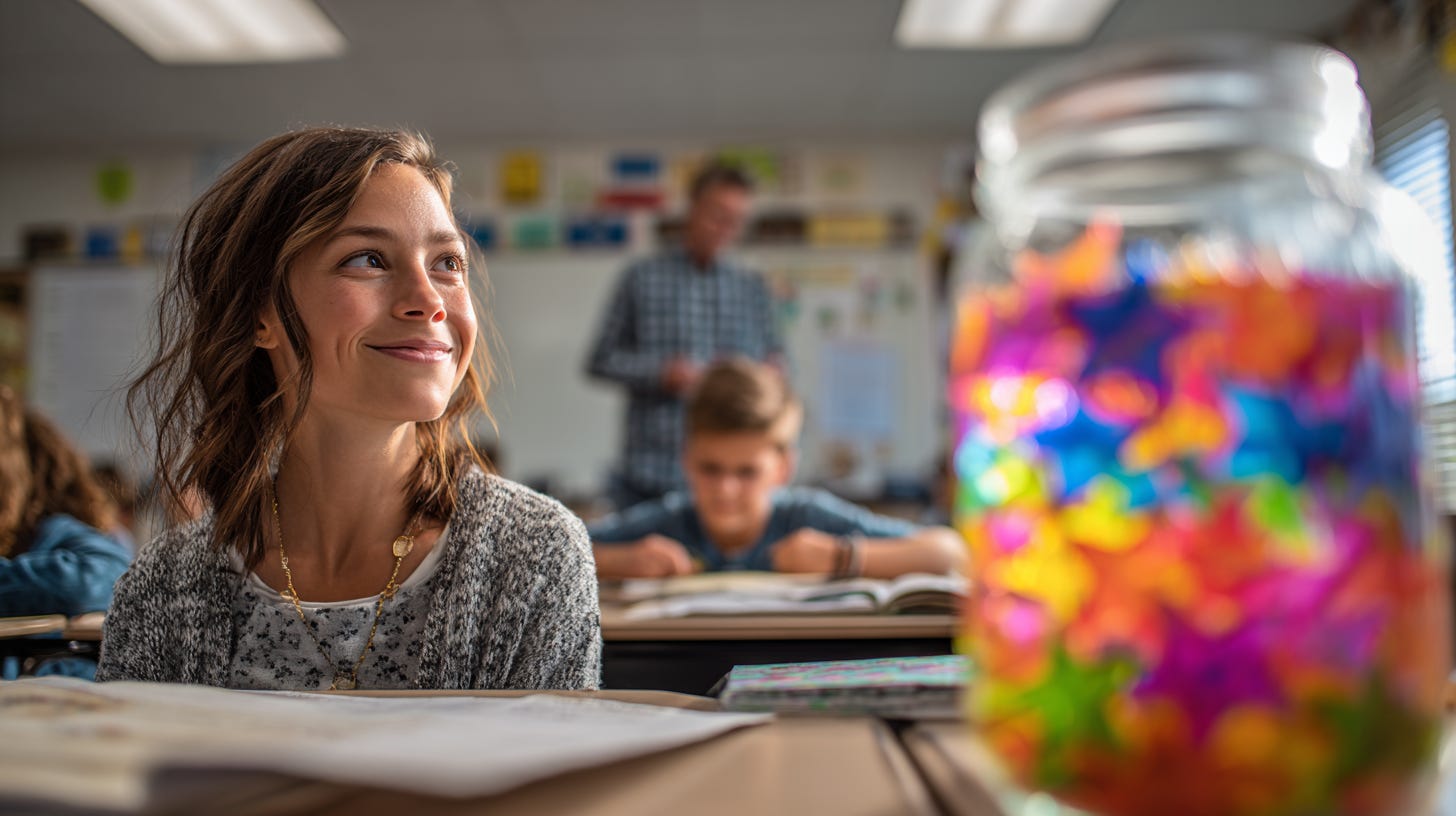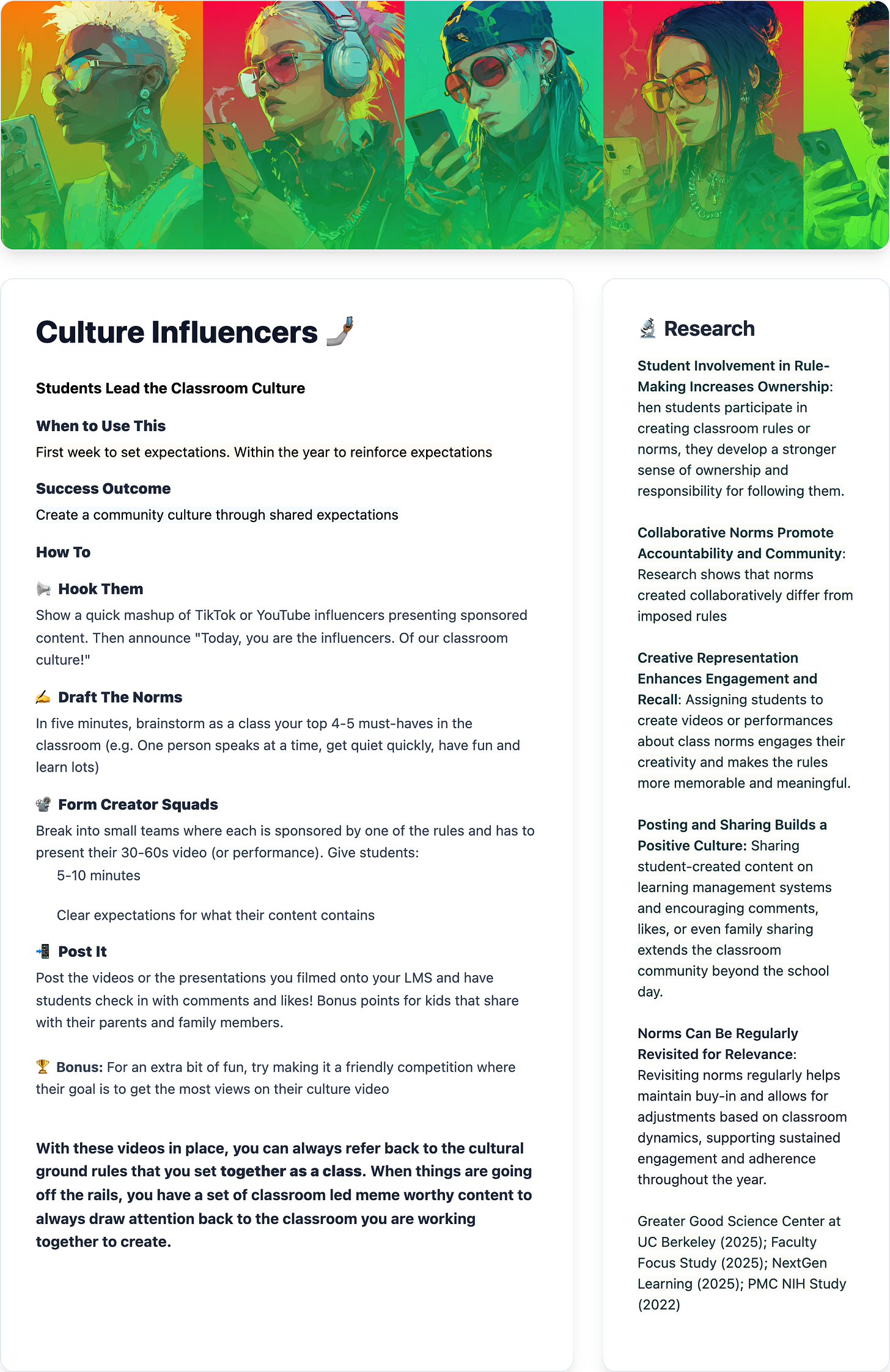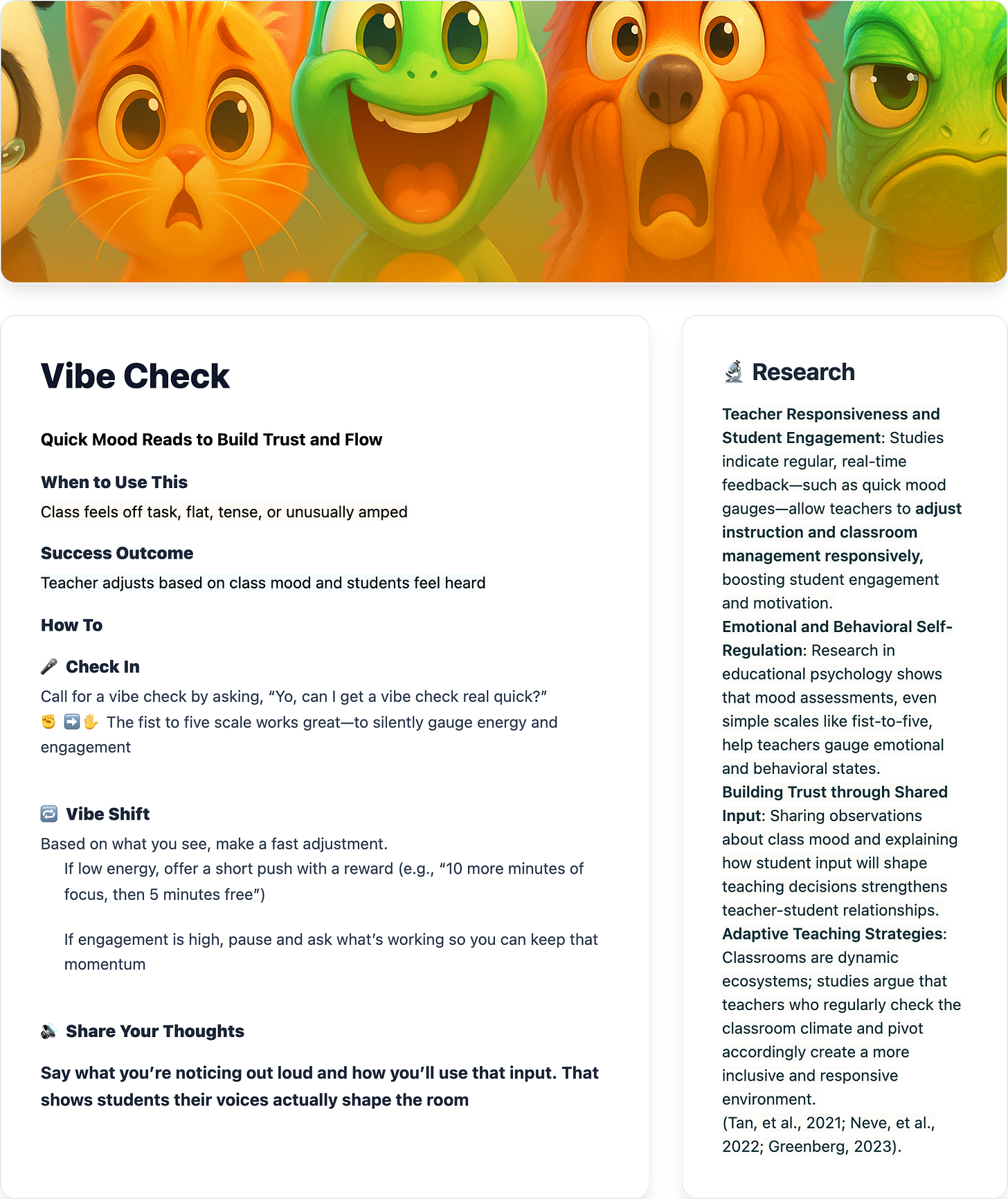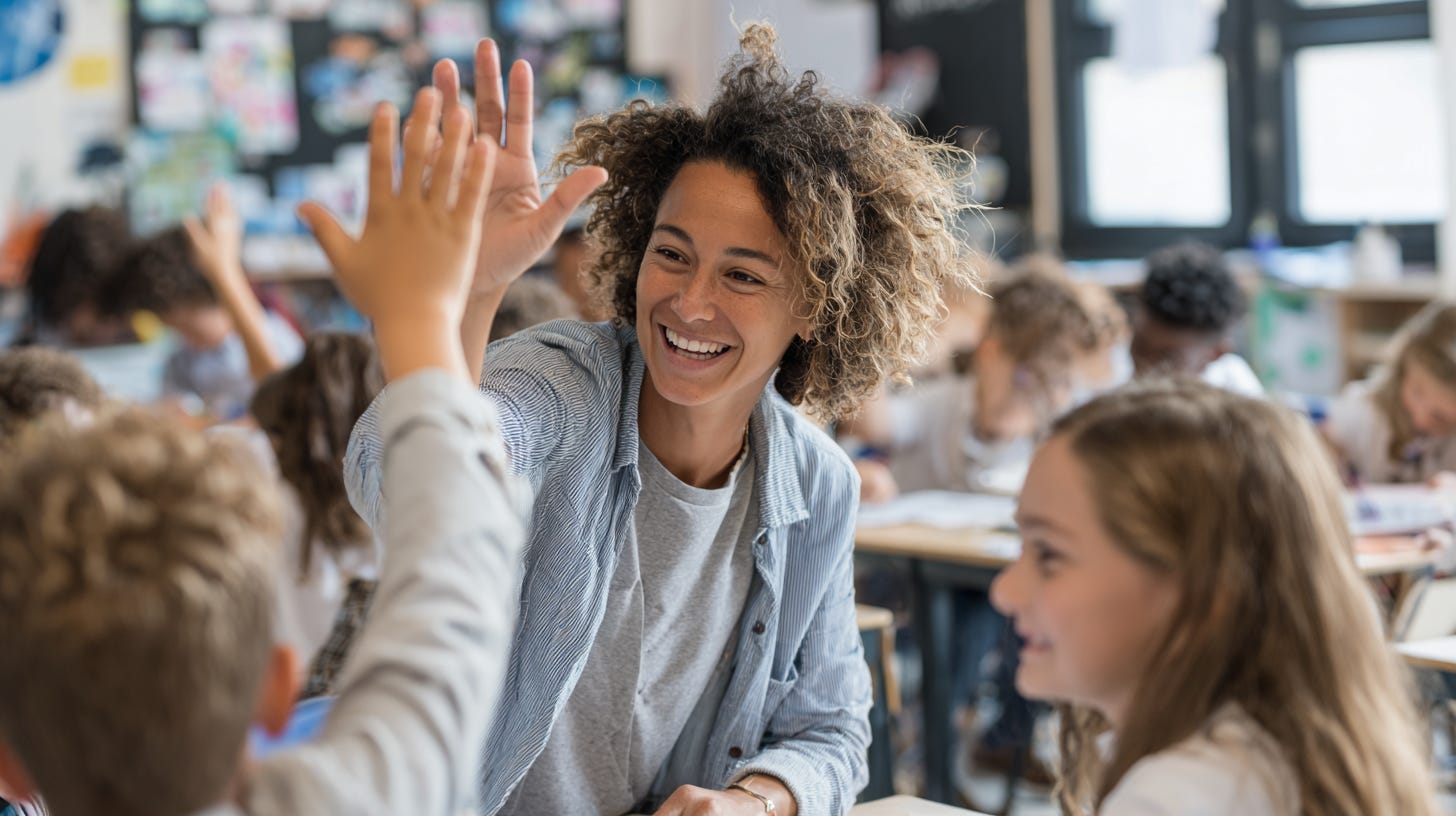Positive and Negative Reinforcement: The Carrot and the Stick in Classroom Management
How to Balance Praise and Redirection to Shape Classroom Culture

Looking for the most effective way to shape student behavior and keep engagement high? This guide breaks down how to use positive reinforcement, behavior specific praise, and logical consequences so your classroom stays focused, supportive, and motivated to learn. These are evidence-based strategies teachers can apply immediately, and that work in real classrooms today.
Many teachers struggle with students who tune out, push boundaries, or only respond when the pressure is on. Without the right balance of encouragement and accountability, small issues can build into ongoing disruptions that drain energy and derail learning.
Why Attention Shapes Classroom Culture
What kind of classroom are you creating?
Is it a space buzzing with happy, engaged learners who feel safe, calm, and valued—or does it sometimes feel tense, chaotic, even overwhelming?
The truth is, we shape the very vibe of our classrooms. Students often mirror what we model—after all, actions speak louder than words. Start by envisioning the culture you want to cultivate, then explore and practice strategies that bring it to life.
💡 Pull Quote: “What you notice multiplies. Highlight the right moments, and they flourish.”
Shifting Our Lens: From Reaction to Reflection
If your goal is a positive, uplifting classroom spirit, that is what you need to call attention to—because every redirect, reprimand, and eye-roll 🙄 can unintentionally fuel the very behaviors you wish to change.
Of course, corrections and consequences are a part of every classroom. But for each reprimand, we should strive to provide a significant number of positives. Research suggests that teachers who increase their positive-to-negative interaction ratio around 5:1 see substantial reductions in disruptive behaviors and increases in student engagement.
One of the most powerful forces shaping classroom culture is what you choose to notice, because those interactions stream continuously from the start of class to the end.
When we focus on the wrong moments, they multiply. Highlight the right ones, and they flourish.
At its heart, classroom management is not just about correcting behavior or enforcing rules. It’s about building a culture where students feel safe, valued, and motivated to thrive. And that begins with a choice: your choice. 🤔 When praise and positivity are prioritized, the classroom culture is consistent, safe, productive, and happy.
🧠 Why We Are Drawn to the Negative
Our brains are wired for survival through what's called negativity bias. Because early humans had to notice threats to stay alive, we are naturally primed to spot problems. In the classroom, this means we are quicker to register what's "wrong" than what's going as expected.
What we notice, name, and reinforce in our students shapes their behavior, influences our own responses, and defines the classroom culture. The off-task student often captures not only your attention but also that of classmates, creating a ripple effect that can either disrupt or reinforce the environment.

Beyond biology, cultural habits also play a significant role. Many of us were educated in systems that emphasized compliance and correction, reinforcing a pattern of spotting problems first. Over time, this natural inclination, combined with learned responses, becomes an automatic habit.
But here is what science says: Just like any habit, our focus can be retrained. This process unfolds through a sequence of awareness, intention, action, repetition, and the formation of a new habit (Clear, 2018).
As you intentionally shift your focus, you model and guide your students through the same process. As they gain awareness of desired behaviors, set small intentions, take action, and repeat positive choices, they develop powerful habits of self-regulation and engagement.
💡 Pull Quote: “You can’t change what you don’t acknowledge.” — Dr. Phil
Your Invitation to Shift: A Moment of Reflection
To begin this powerful shift, start with gentle self-awareness. Approach it without judgment and focus only on observation.
During a typical lesson consider:
Do you pay attention to engagement or talking to friends?
Do you zero in on focused effort or a distracted gaze?
When a student acts out, is it your impulse to correct, redirect, or draw attention to the misstep?
Think about your praise: Do you privately praise as often as you publicly correct?
This reflection is not about changing everything overnight. It is about simply observing your patterns. The more aware you become of where your attention naturally gravitates, the more intentionally you can begin to guide it.
Committing to a New Focus
The next step is an intentional commitment, followed by concrete action.
Set a personal goal: “Today, I will actively look for five moments of positive behavior from students I might typically overlook.”
Challenge yourself: “For every necessary correction, I will find at least two moments to genuinely praise or acknowledge positive behavior.”
This commitment is the bridge from awareness to action.
Creating a Culture Together
A shift in focus fundamentally changes the classroom experience. The most vibrant and resilient cultures are built not by one person but by everyone.
This approach empowers students to take increasing responsibility for their own behavior and for the collective well-being of the classroom.
Just as teachers can fall into habits of reacting to misbehavior, students can develop patterns of disruption and disengagement. The good news is that all habits can be changed. Research on self-regulation shows that transformation, whether individual or collective, begins with a simple sequence: awareness, intention, action, repetition, and the formation of a new habit (Clear, 2018).
This is not a solo journey. When we invite students to become equal partners in shaping the culture of their learning space, we move far beyond compliance. We cultivate genuine commitment and shared ownership, making the classroom a place everyone actively wants to be.
Your 4-Step Playbook for Building a Classroom Team
Step 1: Define Your Shared Vibe (Awareness and Intention)
Work with your students to paint a picture of the classroom you want to create together. Ask:
“What kind of classroom do we want?”
“How do we want it to feel when we walk in each day?”
“What does it look, sound, and feel like when we are doing our best work?”
Step 2: Make Desired Actions Visible (Action)
Choose a few key positive behaviors from your “Vibe Guidelines” and display them. This could be a poster, kindness meter, or a simple chart.
Step 3: Practice and Reinforce (Repetition)
Regularly reference the shared goals and call out specific behaviors that align. Acknowledge your own shifts and reinforce students’ positive actions.
Step 4: Celebrate Growth (New Habit and Ownership)
Track and celebrate progress. Hold ceremonies, fill a jar with notes, or chart wins publicly.
Strategy Spotlight: Culture Influencers 🎤

BrainZone Model Connection: Culture Influencers activates the Green Zone (classroom connection and shared purpose) and the Yellow Zone (focus and expressive thinking). Research shows that peer-led messaging boosts buy-in, and student-created media increases authentic engagement, a key driver of self-regulation and motivation.
Strategy Spotlight: Vibe Check 👋

BrainZone Connection: Vibe Check activates students’ Yellow Zone (independent thinking) by prompting them to assess their personal-energy. If the energy is low, the teacher may select a Green or Orange strategy, both designed to lift activity level and connect with others. If the energy is high, a Blue or Yellow strategy will work best, providing opportunities to calm and focus the mind. Asking for real-time input builds psychological safety, models cognitive flexibility, and increases prefrontal activation, all key to motivation and attention.
Positive Reinforcement: The Carrot
The “carrot” in classroom management is all about using positive signals to encourage and strengthen desired behaviors. This goes beyond simple “good job” statements. It’s about intentionally using positive reinforcement techniques and behavior specific praise to create a classroom culture where students feel motivated, supported, and confident in their abilities.

The Power of Behavior-Specific-Praise
Make it personal and specific: “Thank you, Alex, for starting your work so quietly. That helps everyone focus.”
Focus on effort over outcome: This builds a growth mindset (Sisk et al., 2018). “I noticed you kept trying different approaches to solve that problem. That kind of persistence is what makes you a great learner.”
Be timely and consistent: Deliver praise immediately and consistently. Research suggests feedback within 24–48 hours increases impact(Hattie, 2012).
Positive Reinforcement Strategies for Motivation
Offer variety: Students are motivated by different things—free-draw time, special roles, or recognition.
Make them earned and transparent: Link the reward directly to behavior. Example: “When our class works together to clean up in under five minutes for a full week, we will earn ten minutes of extra recess.”
Spark intrinsic motivation: Use rewards as a scaffold. Over time, students should feel proud of their own efforts without external incentives.
The Stick: Guiding with Purposeful Consequences
The “stick” represents appropriate, logical consequences for behaviors that disrupt the classroom. While positive reinforcement is more effective, consequences are sometimes necessary to maintain fairness and focus.
Logical and related: Consequences should connect directly to the student’s action. Example: if art supplies are left on the floor, the logical consequence is organizing them.
Stay calm and consistent: Deliver consequences without emotion, showing they are tied to behavior, not feelings.
Use sparingly: Overusing punishment damages motivation. Consequences should be limited to when other strategies fail or safety is at risk.
The Golden Rule: The Positive-to-Negative Ratio
For every corrective interaction or redirection, aim to provide at least three to six positive interactions. This keeps the classroom climate warm and constructive, ensuring that even when discipline is necessary, students still feel seen, supported, and valued.
Mastering the Balance
Think of classroom management as a three-pillar system:
Pillar 1: The Carrot (Praise) — the foundation for a growth mindset.
Pillar 2: The Carrot (Positive Reinforcement) — the fuel for engagement.
Pillar 3: The Stick (Consequences) — the clear boundaries.
The positive ratio is the guiding principle that makes these three pillars work together, building trust and respect that strengthen all aspects of classroom culture.
Progress, Not Perfection: Your Ongoing Journey
Building a thriving classroom culture is a journey, not a destination. Every intentional step you take, every positive interaction you offer, plants a seed that grows throughout the year.
The shifts you make, whether in your attention, your praise, or your collaborative efforts, create a lasting legacy for both you and your students. Keep observing, adapting, and celebrating the changes unfolding in your classroom.
Mastering classroom management takes time, but you do not have to do it alone.
Explore more strategies and resources in our Classroom Management Series:
